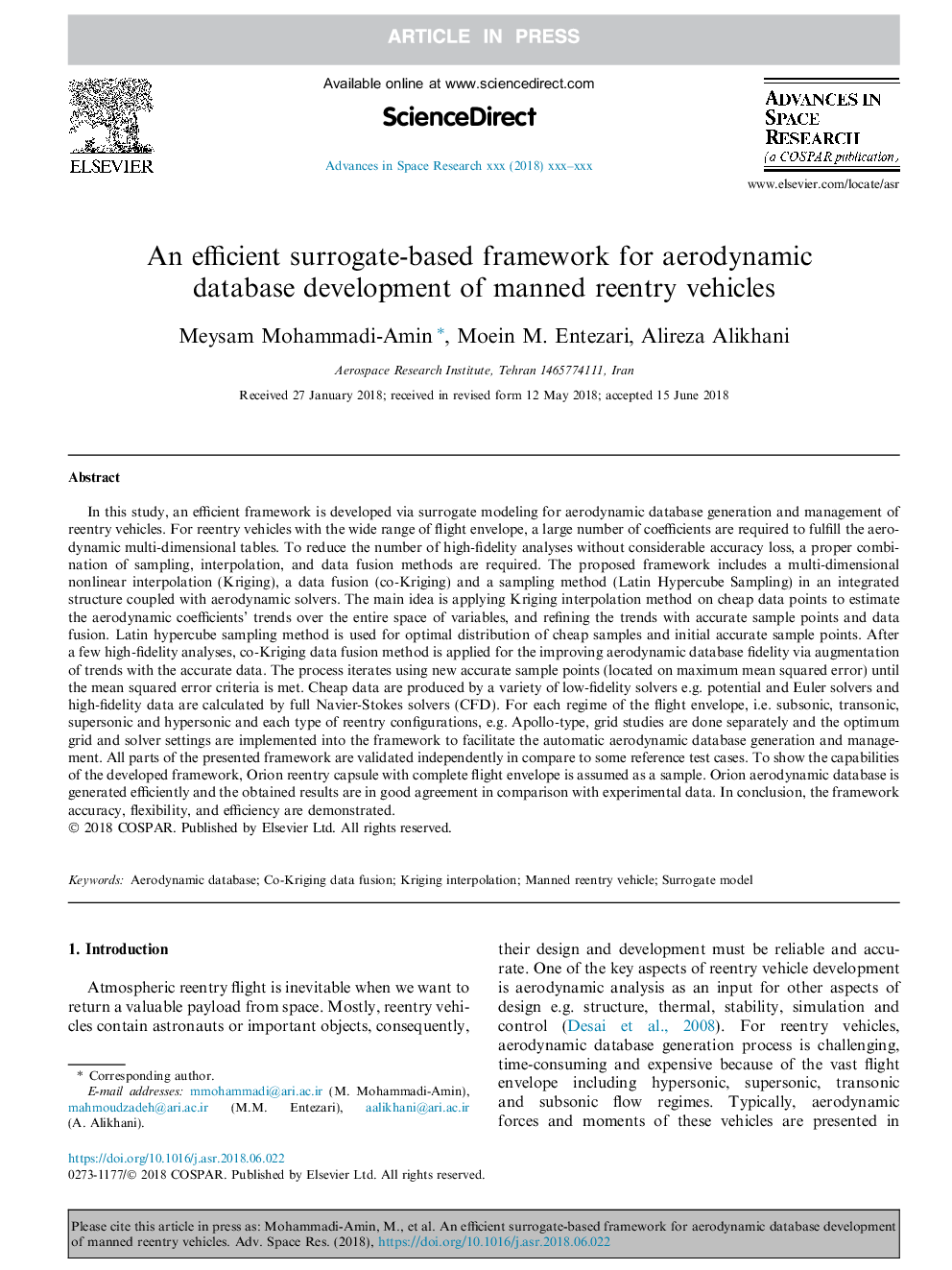| Article ID | Journal | Published Year | Pages | File Type |
|---|---|---|---|---|
| 8131646 | Advances in Space Research | 2018 | 18 Pages |
Abstract
In this study, an efficient framework is developed via surrogate modeling for aerodynamic database generation and management of reentry vehicles. For reentry vehicles with the wide range of flight envelope, a large number of coefficients are required to fulfill the aerodynamic multi-dimensional tables. To reduce the number of high-fidelity analyses without considerable accuracy loss, a proper combination of sampling, interpolation, and data fusion methods are required. The proposed framework includes a multi-dimensional nonlinear interpolation (Kriging), a data fusion (co-Kriging) and a sampling method (Latin Hypercube Sampling) in an integrated structure coupled with aerodynamic solvers. The main idea is applying Kriging interpolation method on cheap data points to estimate the aerodynamic coefficients' trends over the entire space of variables, and refining the trends with accurate sample points and data fusion. Latin hypercube sampling method is used for optimal distribution of cheap samples and initial accurate sample points. After a few high-fidelity analyses, co-Kriging data fusion method is applied for the improving aerodynamic database fidelity via augmentation of trends with the accurate data. The process iterates using new accurate sample points (located on maximum mean squared error) until the mean squared error criteria is met. Cheap data are produced by a variety of low-fidelity solvers e.g. potential and Euler solvers and high-fidelity data are calculated by full Navier-Stokes solvers (CFD). For each regime of the flight envelope, i.e. subsonic, transonic, supersonic and hypersonic and each type of reentry configurations, e.g. Apollo-type, grid studies are done separately and the optimum grid and solver settings are implemented into the framework to facilitate the automatic aerodynamic database generation and management. All parts of the presented framework are validated independently in compare to some reference test cases. To show the capabilities of the developed framework, Orion reentry capsule with complete flight envelope is assumed as a sample. Orion aerodynamic database is generated efficiently and the obtained results are in good agreement in comparison with experimental data. In conclusion, the framework accuracy, flexibility, and efficiency are demonstrated.
Related Topics
Physical Sciences and Engineering
Earth and Planetary Sciences
Space and Planetary Science
Authors
Meysam Mohammadi-Amin, Moein M. Entezari, Alireza Alikhani,
